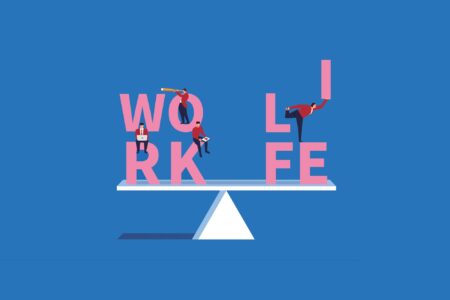Entrepreneur
Disruptive events, from global pandemics to economic downturns, are rising. According to PwC’s Global Crisis and Resilience Surveys, 96% of organizations have reported experiencing significant crises recently — not including the pandemic. Moreover, this statistic was up from 69% in 2019.
Take the case of the February 2021 Great Texas Freeze, an unprecedented winter storm that caused widespread power outages and significant infrastructure damage. Prominent supermarket chain H-E-B faced severe disruptions as the storm’s impact led to empty shelves and delayed restocking of essential goods. The extreme weather conditions forced H-E-B to temporarily shut down several of its stores, compounding the difficulties faced by communities relying on their services for food and supplies.
These impacts received wide coverage nationally, but what received less attention was the collective trauma employees and customers experienced as a result of the storm. H-E-B employees worked under strenuous conditions to manage store closures and ensure safety protocols were followed. The sudden unavailability of basic necessities escalated employees’ and community members’ anxiety and stress as people struggled to secure food and water amidst the chaos. The storm revealed that even the most robust organizations are vulnerable to disruption and disaster.
Dr. Nelu Nedelea, organizational researcher and System Vice President of Mission and Ministry at Mercy, emphasizes that when organizations experience these and other kinds of disruption, leaders must deploy specific resilience strategies to recover.
The heart of the problem, according to Nedelea, is collective trauma. Collective trauma, often used to describe the impacts sustained by cultures and peoples, also refers to the phenomenon where organization members individually and collectively experience emotional and psychological impacts such as stress, anxiety, reduced productivity, increased absenteeism and a pervasive sense of insecurity and instability during and following a traumatic or disruptive incident affecting their organization.
Related: 10 Strategies to Help Businesses Thrive in Times of Crisis
Why does trauma affect organizations? Nedelea explained that during and after a crisis, rather than banding together, employees tend to move away from each other and seek emotional and psychological security elsewhere. This disconnection erodes communication and trust, creating ongoing and accumulated relational impacts that last long after the operational impacts have been resolved.
That’s why strained interpersonal relationships, diminished morale, and a fractured organizational culture are often evident following organizational disruption and trauma. Leaders may struggle with decision-making and maintaining employee engagement, while employees may feel disconnected and undervalued. Communities relying on these organizations for essential services may experience heightened anxiety and uncertainty.
Related: Why Being Resilient Is the First Step to Growth
How can leaders intentionally rebuild trust and foster connection after organizational trauma? Nedelea guides leaders in taking four steps to navigate their organizations through crises:
- Acknowledge the Trauma. Many personal recovery programs stress recognition as the first step. Recovering from organizational trauma is no different. Leaders must first acknowledge the crisis’s impact on the organization and its employees. As Nedelea asked, “How can you resolve the symptoms if you don’t even acknowledge what has happened?”
- Prioritize Emotional Healing. Emotional healing is fundamental to overcoming organizational trauma. Leaders should create a supportive environment where employees feel safe to express their emotions and receive the necessary support, such as through virtual counseling, stress management resources, and informal interpersonal support as well. Following the devastating impact of the 2019 California wildfires, the University of California, Davis, implemented a comprehensive support program for its staff and students. This included counseling services, stress management workshops, and peer support groups. By acknowledging the trauma and providing emotional support, the university helped its community begin the healing process and restored a sense of normalcy and safety.
- Foster Open Communication and Transparency. Transparent and empathetic communication is critical in rebuilding trust and a sense of community within the organization. Leaders must be open about the challenges faced and the steps being taken toward recovery through mechanisms such as holding town hall meetings, providing updates on recovery efforts, and establishing channels for continuous feedback. During the 2020 racial justice protests, Ben & Jerry’s took a strong stance by communicating openly with its employees and the public about its values and actions. The company provided platforms for dialogue and supported initiatives addressing racial inequality. This open communication reinforced trust within the organization and its broader community, demonstrating the company’s commitment to its values and its people.
- Embrace Adaptive Leadership. Post-crisis recovery requires leaders to be flexible and adaptive, navigating through uncertainty and change effectively. Adaptive leadership involves empowering employees to contribute to solutions and fostering a culture of innovation. A central aspect of this is guiding employees to view challenges as opportunities for growth. Nedelea explained, “Reframing challenges helps shift the organizational mindset from one of fear and uncertainty to one of possibility and innovation.” After the 2008 financial crisis, the automotive industry faced significant upheaval. Under the leadership of Alan Mulally, Ford Motor Company embraced adaptive leadership and reframing challenges as opportunity by focusing on innovation and employee involvement. The company’s “One Ford” plan encouraged cross-functional teamwork and open communication, leading to innovative solutions that helped Ford recover and thrive in a challenging market.
Related: How Adaptive Leaders Find Success During Market Volatility
These steps offer an approach that goes beyond fixing the operations to deeply heal the relational fabric of the organization — something Nedelea calls the “organization’s nervous system” critical for its connection and communication that drive productivity and morale. When the organization recovers in this way, it not only survives but emerges stronger and more resilient for the next challenge on the horizon.
Read the full article here











